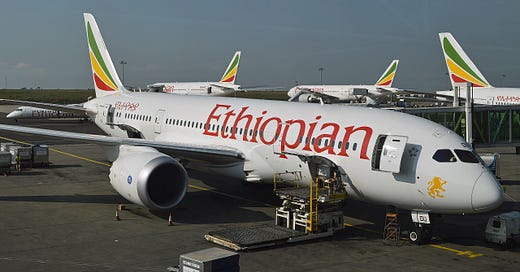Ethiopian Highlands
East African carrier Ethiopian Airlines is hailed as an aviation success story, but have questionable cabin configuration decisions put the breaks on growth?
The majestic Ethiopian highlands are characterised by impressive peaks, unique plants like the Abyssinian Rose and nearly 900 species of birds. Also flying in the Ethiopian skies is Ethiopian Airlines, the land-locked country’s flag carrier.
Long considered an aviation success-story, the airline was consistently profitable pre-COVID, growing the bottom l…



